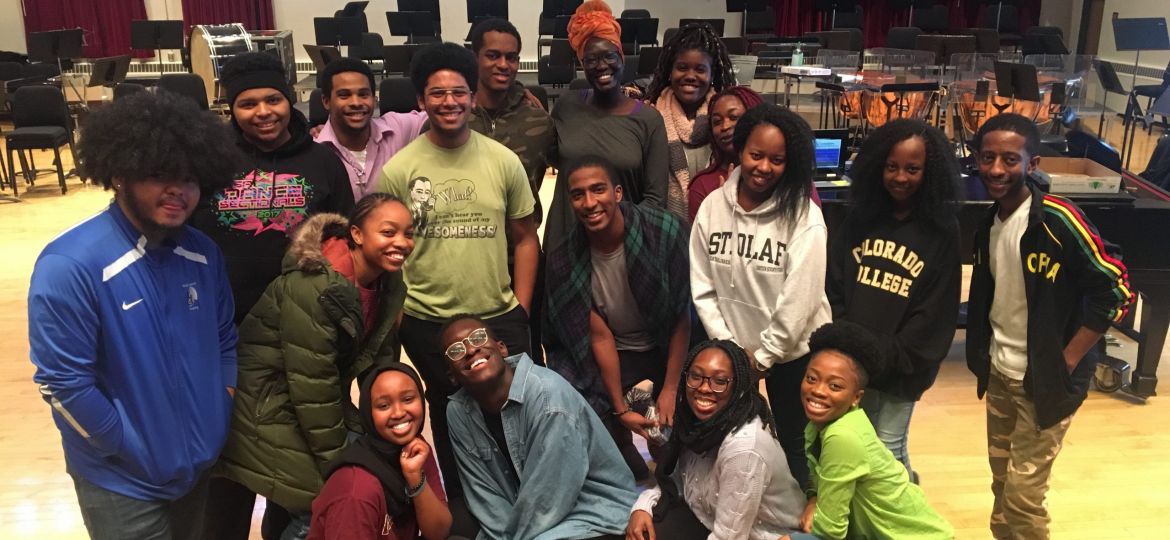
The Black Ensemble – dedicated to showcasing and representing black arts and culture – was formed by Emmanuel Bioh ’22 and Harper Bischoff ’22 Dec. 12. The Ensemble plans to hold their first performance April 19.
Bioh and Bischoff, who are members of Viking Chorus and Manitou Singers, began thinking about starting the group during the St. Olaf Christmas Festival. Of particular interest to the pair was the disconnect between the predominantly white performers and the Festival repertoire – which commonly includes culturally black music.
“We were doing these big, known, African-American, black pieces, and we appreciate these pieces so much,” Bioh said. “But who’s actually representing these pieces?”
Part of the philosophy of the Black Ensemble is that there is a difference between celebrating black works of art and representing them through performance. While black art is commonly performed by St. Olaf music organizations, the Black Ensemble aims to facilitate the performance of black art by black students.
“Some people have brought up the concern that Black Ensemble is only for black students,” Bioh said. “Black Ensemble isn’t just a space for black students to sing Kumbaya all the time, it’s a space for representation. Only the people who experience a certain thing can represent that thing.”
Aside from representation, the Black Ensemble also hopes to provide a space in which black students feel included and artistically motivated.
“We want this to be a well known group on campus … We want people to know a lot more about black culture, our music, and the meaning behind it – because it’s so great.” – Harper Bischoff ’22
“This lets black students on campus know that they are valid and they are just as able to express themselves artistically as anyone,” Bischoff said.
Tesfa Wondemagegnehu, Black Ensemble sponsor and the conductor of the St. Olaf Viking Chorus and Chapel Choir, seconded the idea that similar performing arts organizations at predominately white institutions can have a positive impact on black students.
“There were times that I just wished I could sing a gospel tune with my friends, there were times when I wished we could just have a freestyle battle,” Wondemagegnehu said. “I never saw that in my undergraduate institution. And so to have a space on campus where we can have all of these expressions that have historically been considered black art, that’s powerful.”
Thus far, 40 students have signed up to join the Black Ensemble, and the group wishes to grow larger.
“We want this to be a well known group on campus,” Bischoff said. “We want people to know a lot more about black culture, our music, and the meaning behind it – because it’s so great.”

